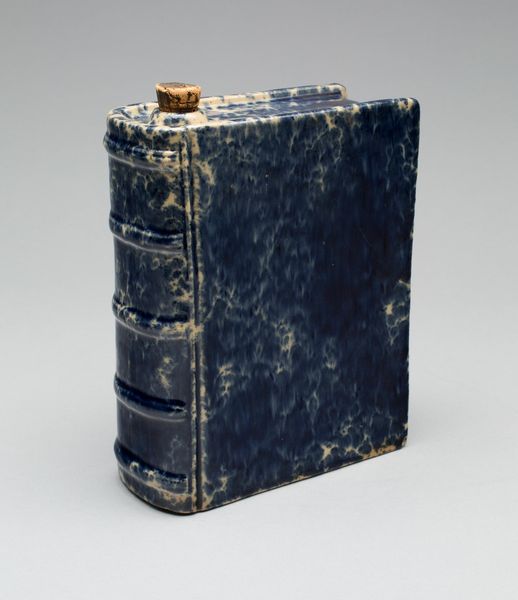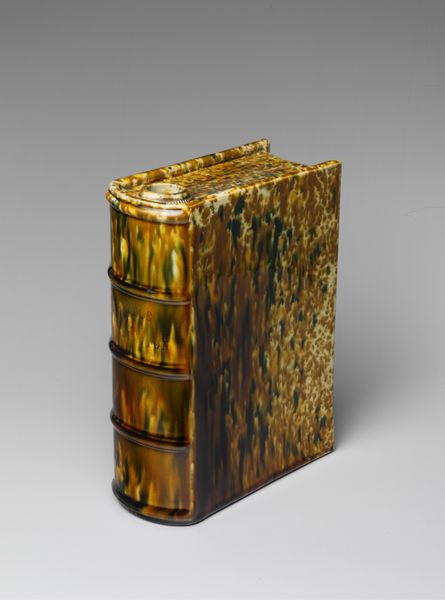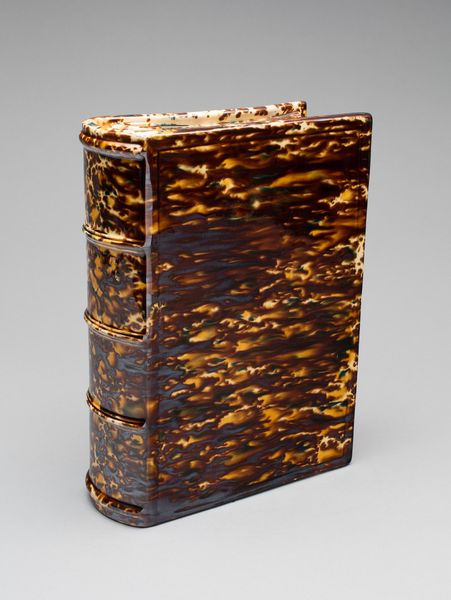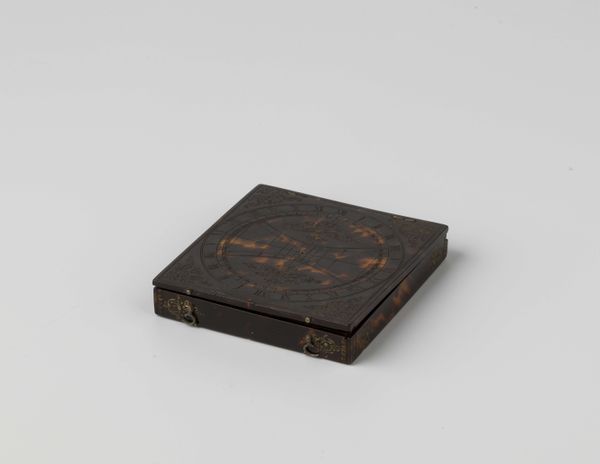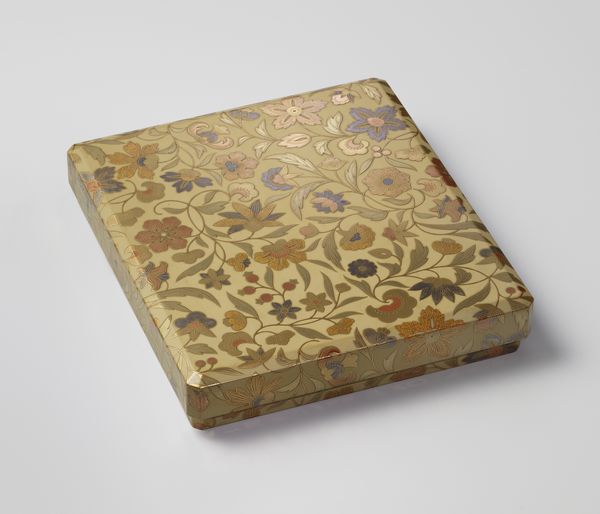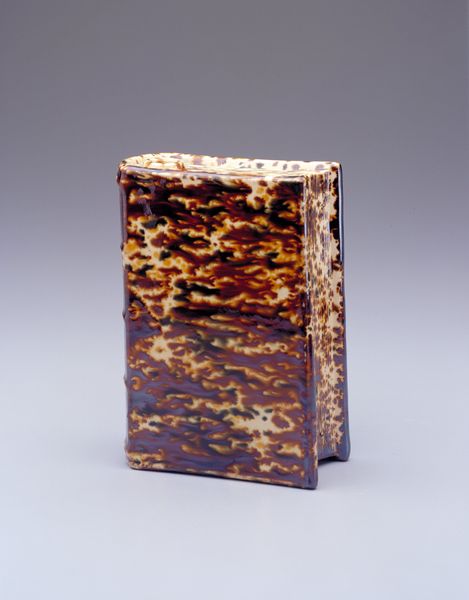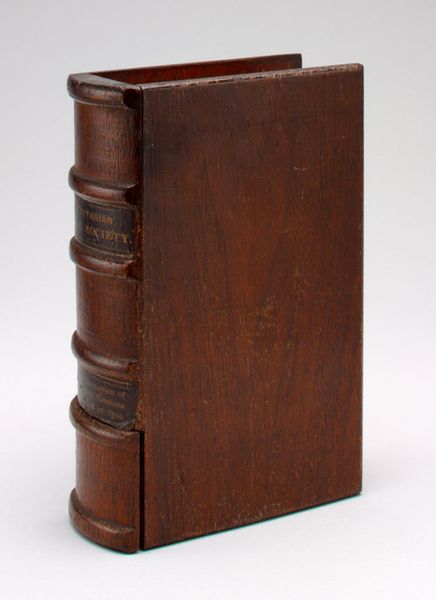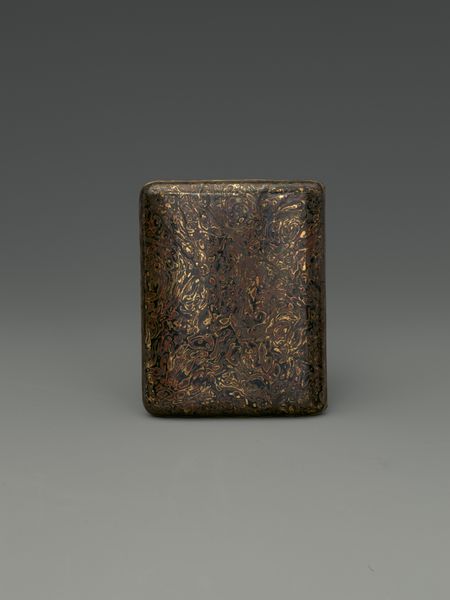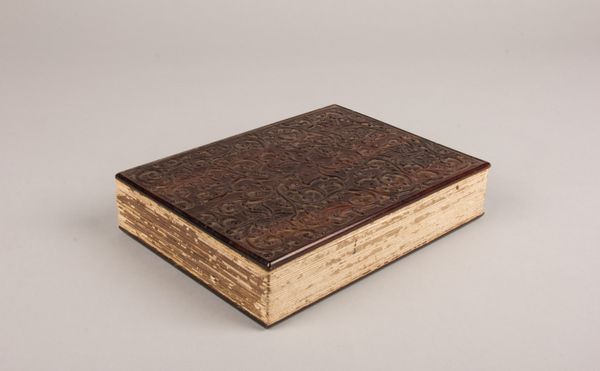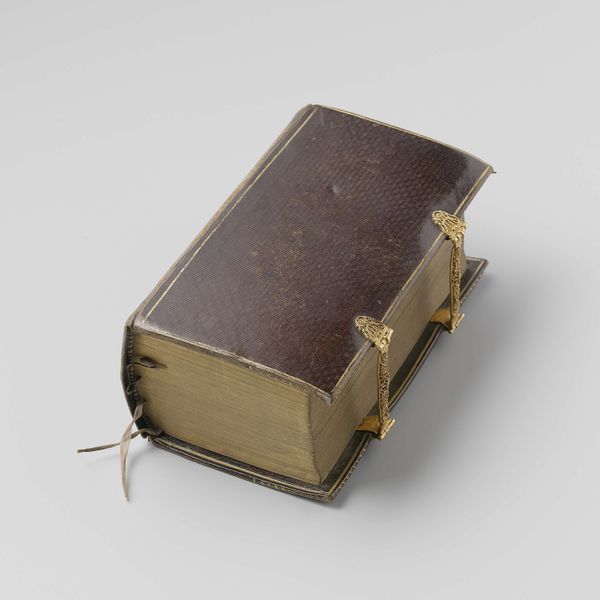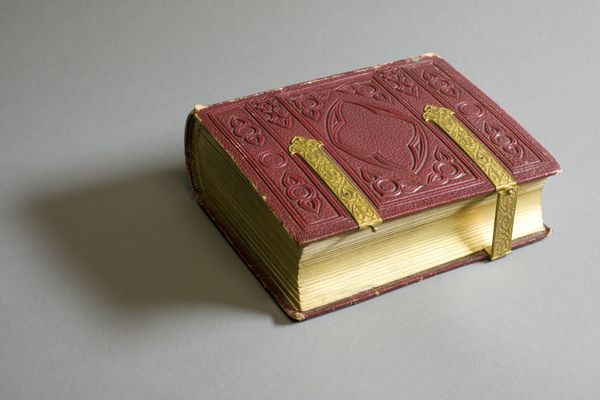
#
3d sculpting
#
circular oval feature
#
3d model
#
3d printed part
#
book
#
product fashion photography
#
jewelry design
#
virtual 3d design
#
3d shape
#
3d digital graphic
#
metallic object render
#
united-states
Dimensions: H. 10 3/4 in. (27.3 cm)
Copyright: Public Domain
Curator: What strikes me first is its materiality, this surprising ceramic replica of a book. Editor: Yes, this is the "Book flask," dating from 1846 to 1858, created by the United States Pottery Company. Looking at this object, I'm immediately drawn to the implications of its very existence. During this era in the United States, literacy, access to information, and religious belief were critical axes of power. The inscription on the book references devotional reading and suffering. Curator: The faux-tortoiseshell glaze gives it a feeling of both luxury and ersatz authenticity. The creation of this ceramic ware would have involved slip-casting, a technique which itself became quite democratized, although the initial models might have been created using painstaking artistry and craftwork. Editor: Right, slip-casting certainly accelerated production, transforming art into commodity. What statements might its owners or users have been making through its use, either conscious or not? What roles might gender, class, or access to knowledge have played at the time of the pottery's original sale? It prompts a lot of thought around what a specific readership may have felt about the era and themselves. Curator: Absolutely, and to see this book form, usually a source of intellectual and spiritual sustenance, repurposed as a flask—presumably for alcohol—introduces an interesting tension. The object transcends pure function. I imagine a narrative, possibly about a community member attempting to cope in new ways to suffering referenced on the book, or using his station to take new steps and directions. Editor: Exactly, this tension is compelling, because you also wonder about access to devotional and moral guidance which would have affected attitudes around work, life and progress in the country during the mid-1800s. Curator: And the craftsmanship itself elevates what could have been a purely functional, everyday object. It shows a commitment to aesthetic pleasure and subtly communicates class aspirations. Editor: Thinking about it, the form, technique, and materials used open avenues to discussing 19th-century American social dynamics and questions about the evolving concept of artistic value and labor. Curator: It’s more than a novelty item; it is also very much an artifact, isn't it? A lens through which to consider identity formation. Editor: Yes, it brings forward several threads of thought, providing multiple connections to consider what the owner could have valued, used and projected about themselves through possessing the art.
Comments
No comments
Be the first to comment and join the conversation on the ultimate creative platform.
